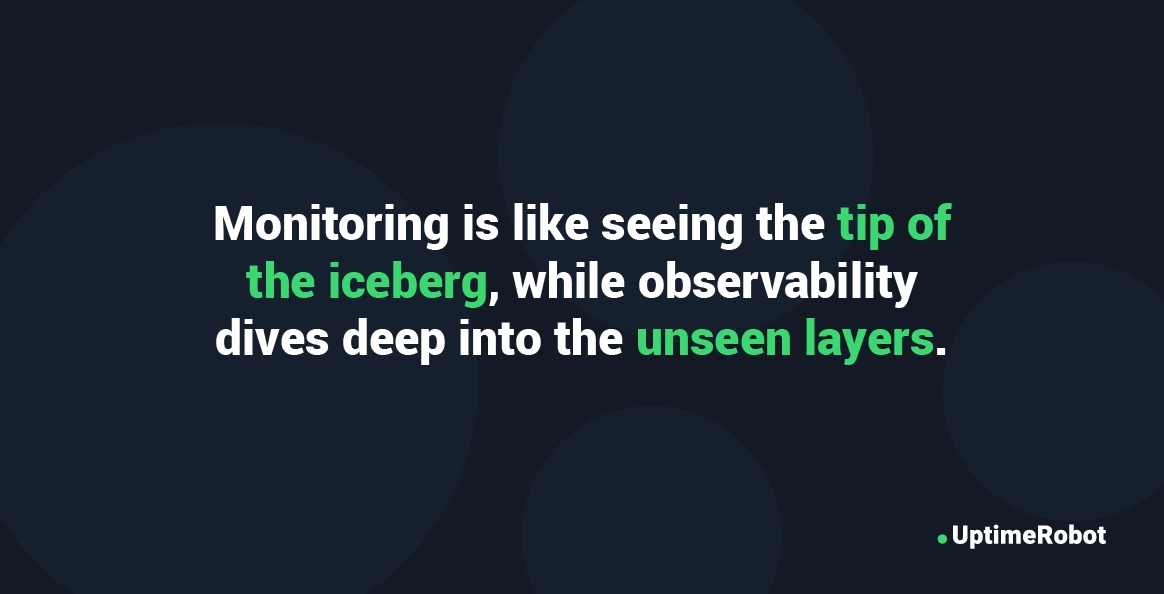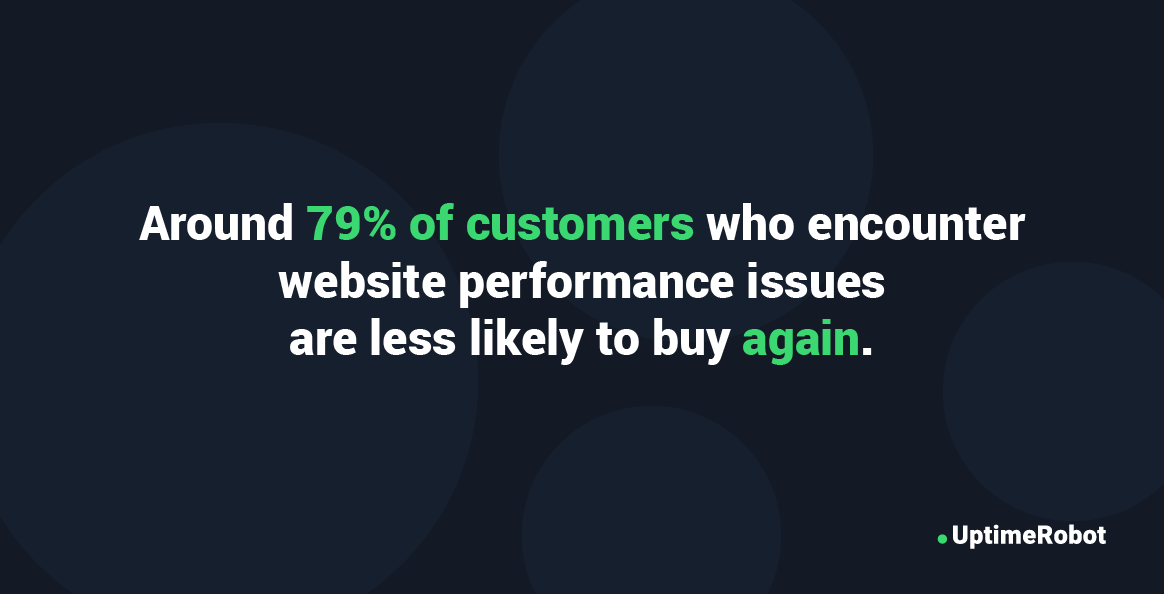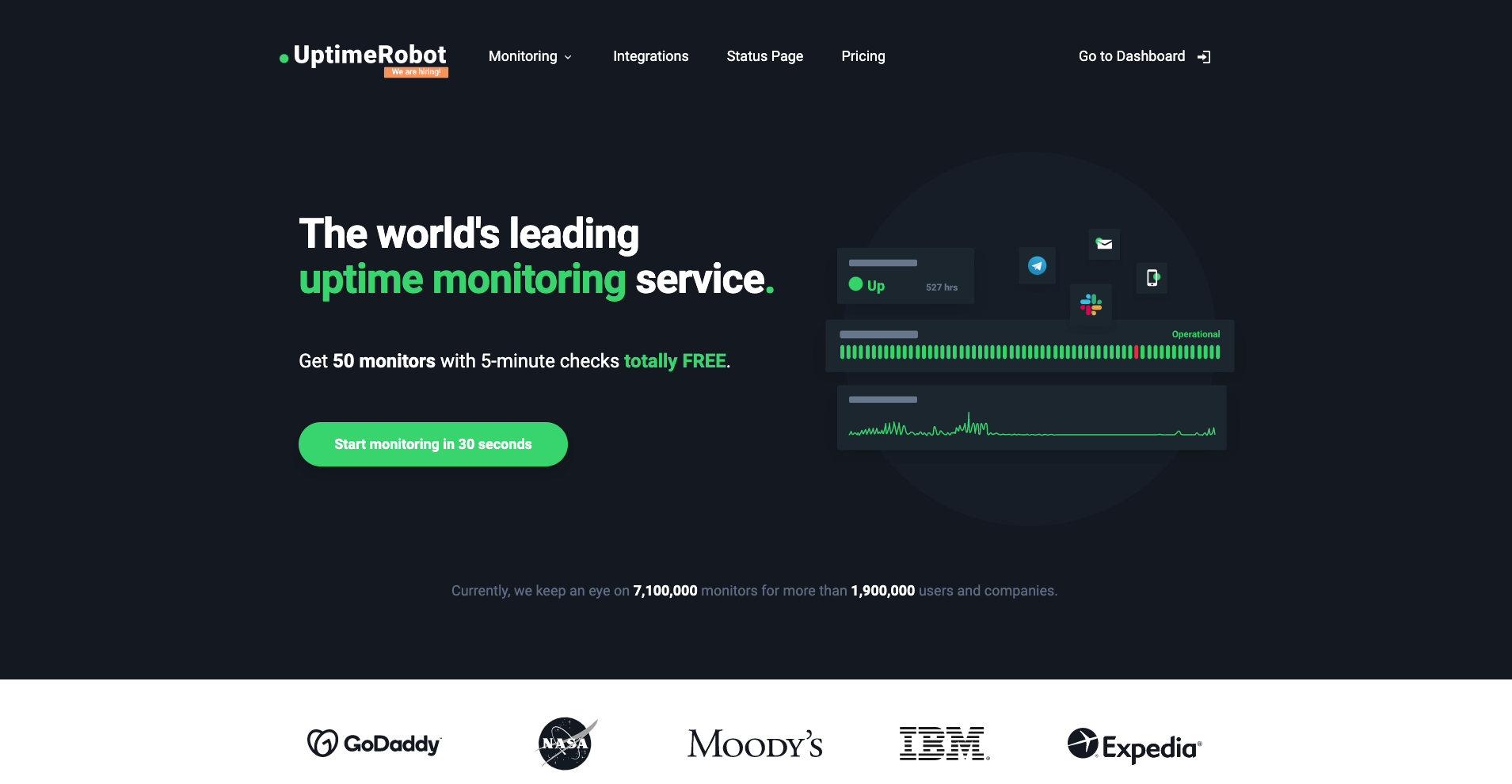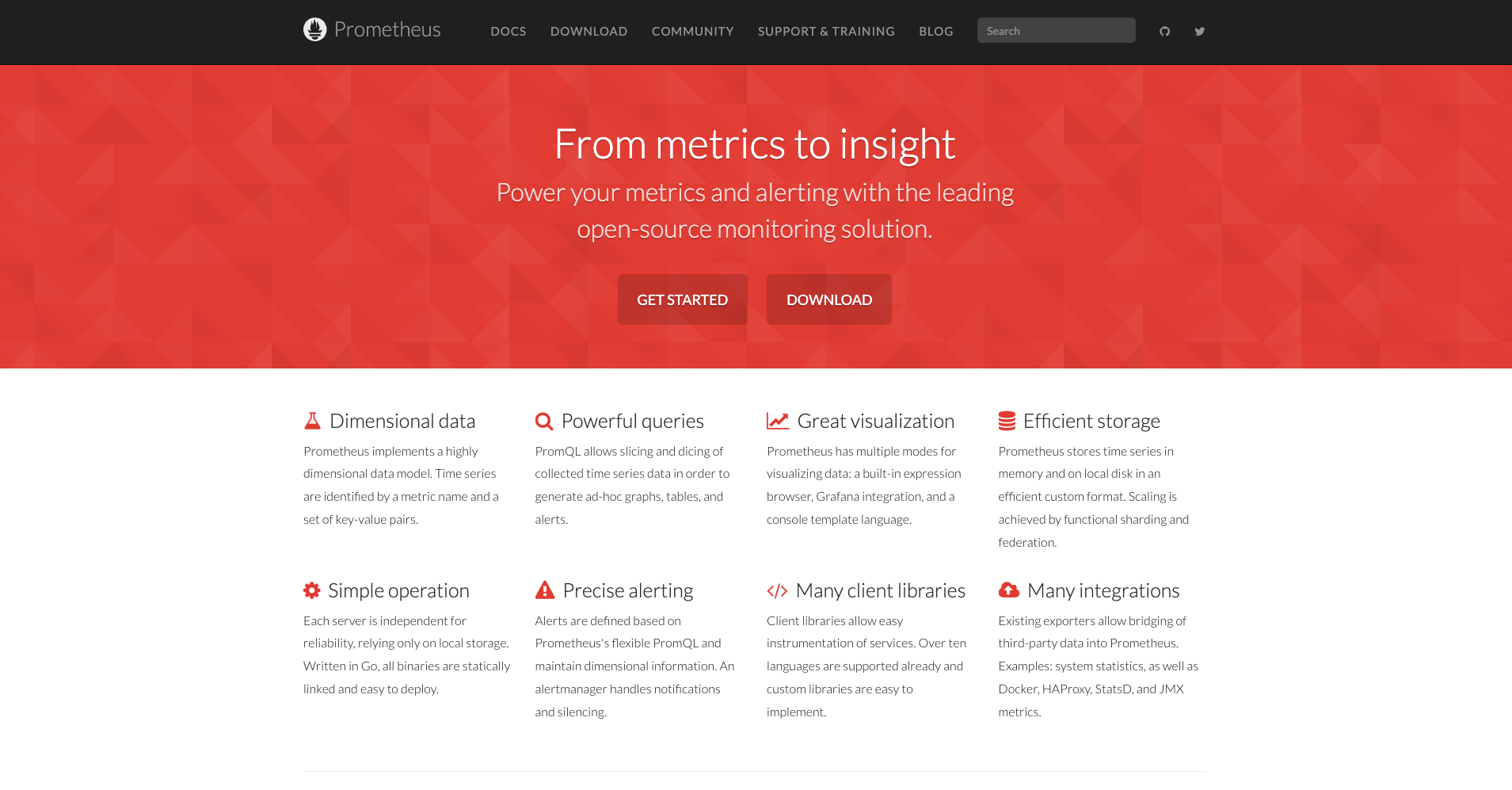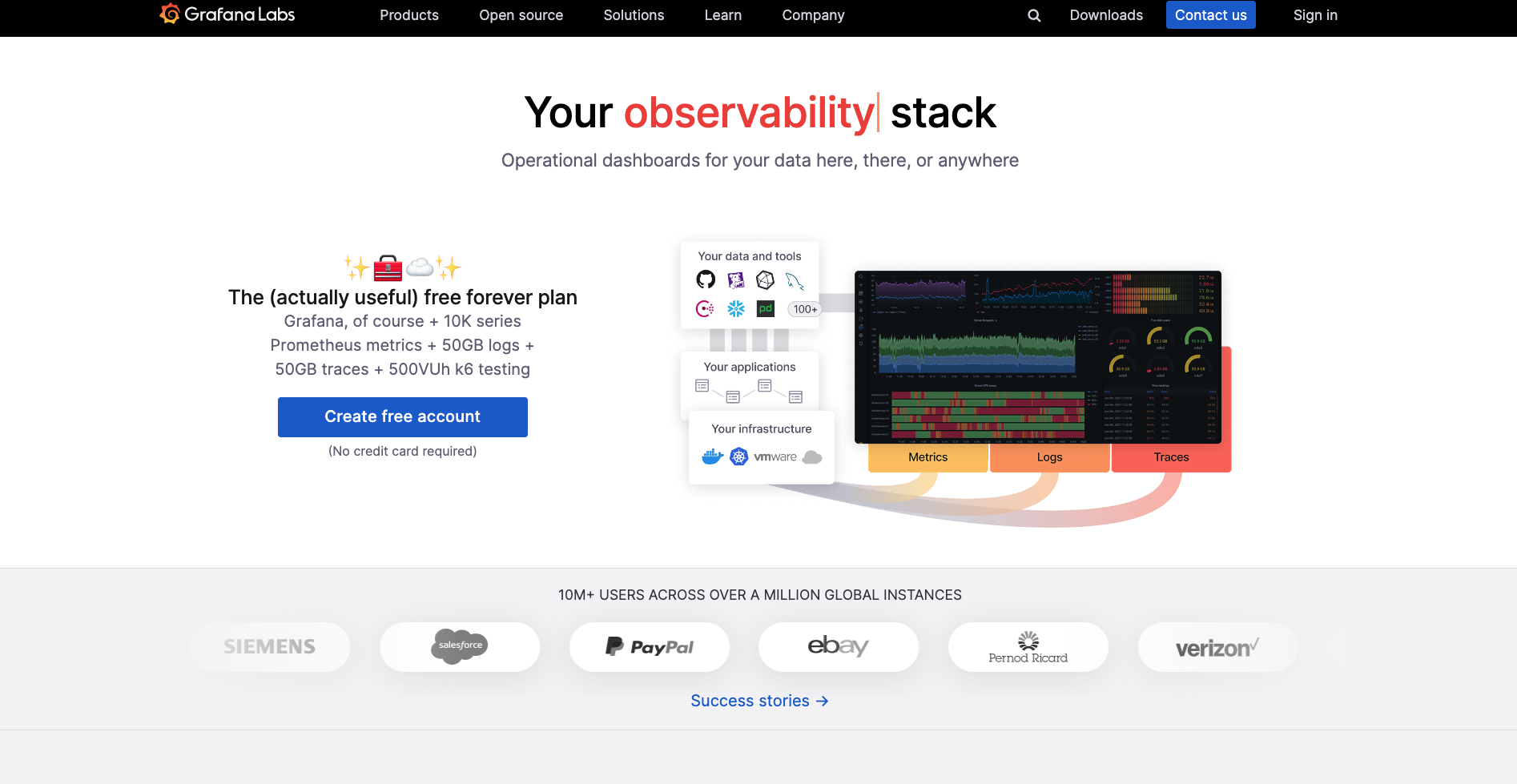Quick links
As technology advances, so does the need for software engineers and DevOps teams to understand the precise inner workings of the systems they create.
In 2023, observability is quickly becoming a key factor in gaining success for many businesses. The study states that many businesses are in different stages of adopting observability into their arsenal of tools, and that the need for these practices is on the rise.
This guide will provide you with a deep understanding of observability, how it differs from monitoring, and why it is essential for modern-day DevOps practices. Our team of experts has compiled this guide to help you gain insights into the different components of observability, and the best tools and practices to implement them.
Table of Contents
- What is Observability?
- The Three Pillars of Observability
- Observability vs. Monitoring
- Why is Observability Important?
- Reduce IT Costs with Observability
- Challenges of Observability
- Use Cases in Observability
- Best Practices
- Key Observability Trends
- Concepts of Observability: Tools & Policies
- How to Implement Observability?
- Observability for Threat Detection & Security
- Top 3 Tools for Observability
- How to Use UptimeRobot for Observability
- Final Thoughts
What is Observability?
Observability is an important concept in both DevOps and software engineering that refers to the ability to understand and analyze the internal state of a complex system based on its external outputs.
In other words, observability is the ability to monitor and understand the behavior of a system without having to rely on direct access to its internals.
In DevOps, system observability is defined as the ability of the operations team to manage and monitor the performance and behavior of large-scale distributed systems. The way operations teams do this is by monitoring the right metrics, traces, and logs (see below), and by analyzing data to identify and resolve issues.
The main goals of system observability in DevOps are to increase efficiency, reduce downtime, and improve system reliability.
In software engineering, the concept is similar – it is the ability to understand or learn how code performs in production environments. Like in DevOps, software engineers look at key metrics, logs, and traces, as well as use data analysis to target and identify issues with the code.
The purpose of observability in software engineering is to improve performance, increase efficiency, and to reduce the amount of time it takes to resolve issues.
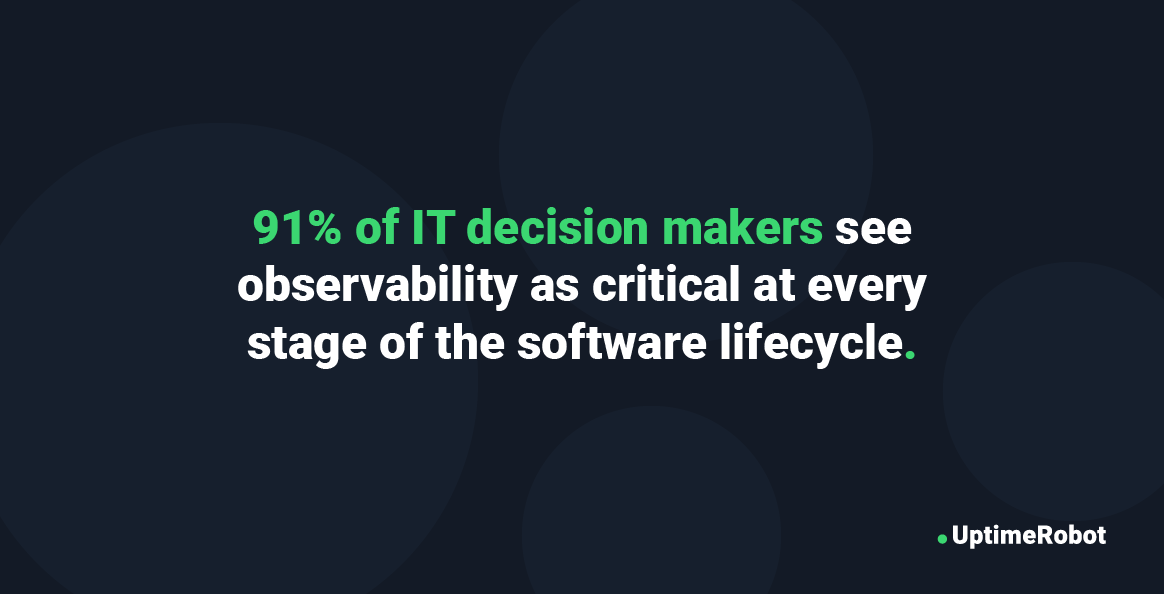
The Three Pillars of Observability
There are three key components that allow us to understand the internal workings and condition of a system, along with some other important aspects.
Logs
Logs are records of events that occur within a system, like the black box in an airplane. They tell us about what happened, when, and the reasons for it. Logs can be used to troubleshoot issues, monitor system performance, and identify potential problems before they become critical.
Metrics
Metrics are quantitative measurements that help DevOps teams and engineers track the behavior of a system over time. Metrics tell us about system performance, resource usage, and user behavior. They can also be used to identify trends and patterns, and to alert teams to potential issues.
Traces
Traces are records of transactions that occur within a system. They provide detailed information about the sequence of events that occur during a transaction, including the time spent at each step, the resources used, and any errors or exceptions encountered. Traces can be used to identify bottlenecks, performance issues, and other problems affecting the user experience.
Other Components of Observability
The three pillars of observability are far from being the only factors that go into this complex practice. These are some of the other components that matter in observability.
Alerting
Similar to fire and car alarms, alerting is the process of notifying teams when a system metric or log event reaches a certain threshold. Alerting is necessary for issues to be addressed as soon as possible, and can help prevent system downtime or other critical problems.
Visualization
Raw data can be difficult to analyze, so instead, we can visualize it by putting it into charts and graphs that make it more digestible. Visualization tools can help teams identify trends, patterns, and outliers, and can help them make informed decisions about system performance.
Correlation
How do logs, metrics, and traces relate to each other? The process of correlation seeks to answer this question and gain a deeper understanding of the system in order to resolve issues.
Automation
Automation is the process of using tools and scripts to automate tasks related to observability, such as alerting, visualization, and correlation. Automating the right processes can help teams save time and reduce the risk of human error.
Dependencies
This term refers to the external systems or services that larger, more complex systems rely on to function. Taking these dependencies into account helps teams understand how the external systems impact the system being observed.
User experience
What is the point of a system if not to work properly for the end user? Metrics that involve user experience (UX) like page load times, engagement rates, and error instances let teams know how users interact with the system, and can identify ways to make the UX better.
Observability vs. Monitoring
Remember that infamous Reddit post by u/unidan about crows and jackdaws? [Author’s note: this is an obscure/silly reference that can easily be replaced by another]. The concept is similar here – monitoring is part of observability, but they are not the same, and observability encompasses a larger concept.
Similarities
- Both provide visibility into system behavior: Monitoring and observability both provide teams with visibility into system performance, allowing them to identify issues and optimize system behavior.
- Both require data collection: Both practices require the collection and analysis of system data, although observability requires more comprehensive data collection across multiple dimensions.
- Both enable proactive management: While monitoring is primarily reactive, both monitoring and observability can enable teams to take proactive steps to optimize system performance and prevent issues.
Differences
- Scope: Monitoring tends to focus on specific metrics or events, whereas observability is broader in scope, encompassing a wide range of system data across multiple dimensions.
- Proactivity: Monitoring is usually done in reaction to an event, with alerts or notifications triggered when predefined conditions occur, while observability is more proactive, enabling teams to identify issues well in advance, before they become critical.
- Data analysis: Monitoring typically involves simple analysis of predefined metrics or events, but observability requires more complex data analysis techniques, such as distributed tracing and log aggregation.
- Data retention: Observability requires longer-term retention of data to enable analysis and trend identification over time. Monitoring data is often retained for a limited period of time.
- Tooling: Monitoring often involves the use of specialized monitoring tools. On the other hand, observability requires a broader range of tools, including log aggregation platforms, distributed tracing tools, and others.
- Complexity: Overall, observability is more complex than monitoring, requiring more infrastructure and specialized expertise to implement effectively.
Benefits of monitoring
When comparing the differences between observability and monitoring, it is easy to see that observability is far more robust and can reap benefits on a larger scale. That is not to say that monitoring is without its own merits, and many of the benefits one gains from observability can be had with monitoring.
- Early issue detection: Monitoring allows teams to detect issues early, before they have a significant impact on system performance or availability.
- Improved system availability: By detecting and addressing issues quickly, monitoring can help improve system availability, and reduce downtime.
- Better resource allocation: Monitoring helps teams identify trends and patterns in system behavior, allowing for more informed decisions about resource allocation and capacity planning.
- Compliance: Monitoring can help teams meet regulatory requirements and ensure compliance with industry standards.
- Improved user experience: Monitoring can help teams identify and address issues that may be impacting user experiences, such as slow page load times or error messages.
Observability as code
Observability as code is an emerging approach that applies software engineering principles to the creation and management of observability-related resources, such as alerts, dashboards, and instrumentation.
The basic idea is to treat observability-related code as a first-class citizen in the software development process, and to manage it in the same way that other code is managed.
Treating observability as code can bring a number of benefits to organizations that adopt it.
- Consistency: By managing observability-related resources as code, teams can make sure that their observability setup is consistent and reproducible across different environments.
- Collaboration: Observability as code enables teams to collaborate more effectively on observability-related resources, by using the same tools and processes that are typically used for other code.
- Versioning: Teams can take advantage of version control systems to track changes and roll back to previous versions, if necessary.
- Automation: Observability as code can be integrated into existing CI/CD pipelines, enabling automated testing and deployment of observability-related resources.
- Efficiency: Teams can leverage code reuse and create templates to streamline the process of creating and managing observability resources.
Observability as code is especially useful in complex, distributed systems, where observability is essential but can be challenging to manage manually. By treating observability as code, teams can ensure that their observability setup is consistent and scalable, and that it evolves along with the rest of the system over time.
Observability in microservices and containers
Observability in microservices refers to the ability to gain insights into the behavior and performance of a microservice-based application. Microservices are modular and distributed, which makes them difficult to monitor and troubleshoot when issues arise.
Observability helps address these challenges by providing visibility into the entire system, including individual microservices, their dependencies, and the interactions between them. Observability in microservices enables teams to quickly detect and diagnose issues, improve the performance and reliability of their applications, and make informed decisions about resource allocation and capacity planning.
As microservices architectures become increasingly popular, observability is becoming a critical requirement for modern software development and operations.
Observability is particularly important in containerized environments because they are often dynamic and complex, with containers being spun up and down frequently. With containers, traditional monitoring tools may not be sufficient to provide the level of visibility needed to maintain system health and respond to issues in a timely manner.
Container observability involves monitoring container performance and behavior, as well as the performance and behavior of the underlying infrastructure and dependencies. This includes metrics such as CPU usage, memory usage, and network traffic, as well as logs and traces generated by the containers.
Why is Observability Important?
It is important to know the concepts and methods of observability for many reasons, but the most important aspect is being able to understand how your systems work, and the processes occurring within them. Teams need to understand everything in a system to prevent downtime, diagnose issues, and improve the overall reliability of the system.
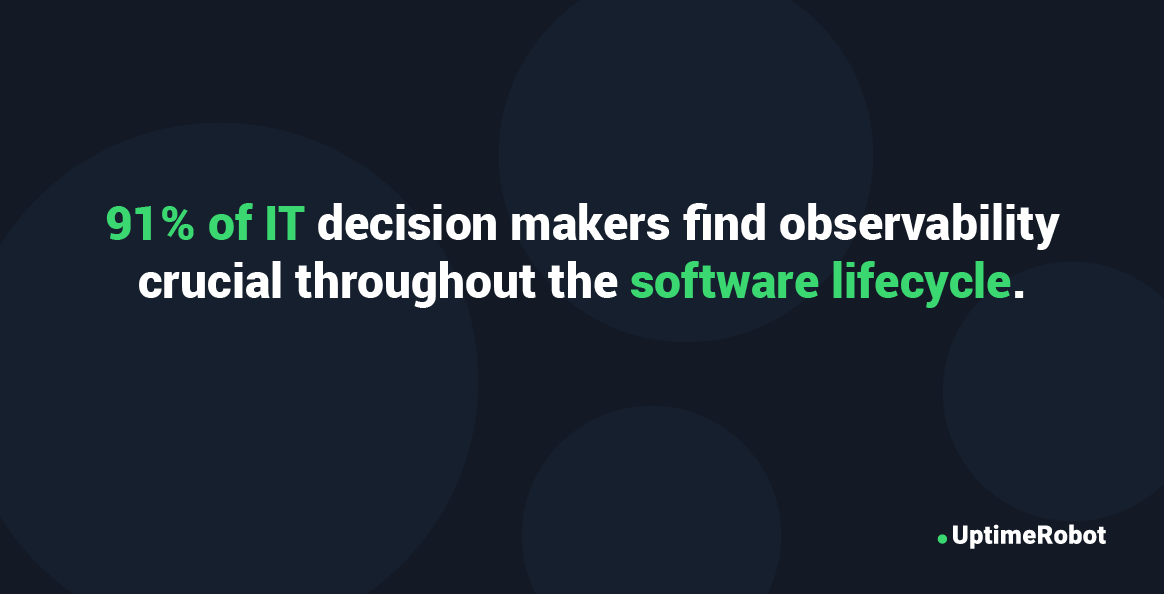
Furthermore, knowing the ins and outs of how a system function allows us to allocate resources in a more efficient way, improve system architecture, and plan for capacities.
Benefits of observability
- Improved system reliability: Observability allows teams to identify and diagnose issues quickly, reducing downtime and improving system availability.
- Faster issue resolution: By providing real-time visibility into system behavior, observability allows teams to diagnose and resolve issues more quickly and efficiently.
- Increased developer productivity: Observability tools and techniques allow developers to more easily understand how their code is performing in production environments, enabling them to make improvements more quickly and with greater confidence.
- Better resource allocation: By providing a comprehensive view of system behavior, observability allows teams to make more informed decisions about resource allocation and capacity planning.
- Improved user experience: Observability lets teams monitor user experience metrics, such as page load times and error rates, allowing them to identify and address issues that may be affecting user experience.
Cons of observability
Though these concepts are highly beneficial, there are two sides to every coin. These are some of the problems you may encounter when practicing observability.
- Implementation complexity: Implementing observability in complex systems can be challenging and may require significant changes to existing systems and processes.
- Cost: Implementing and maintaining observability tools and infrastructure can be expensive.
- Data overload: Observability is prone to generating large volumes of data, which can be difficult to manage and analyze without the right tools and processes in place.
- Security and privacy concerns: Observability requires access to sensitive system data, which, if handled improperly, could lead to security risks.
Reduce IT Costs With Observability
While investing in good observability tools comes with a price tag, there are ways to cut the costs of implementing observability, while still gaining enormous benefits. Use these tips to ease the potentially expensive burden on your company’s budget.
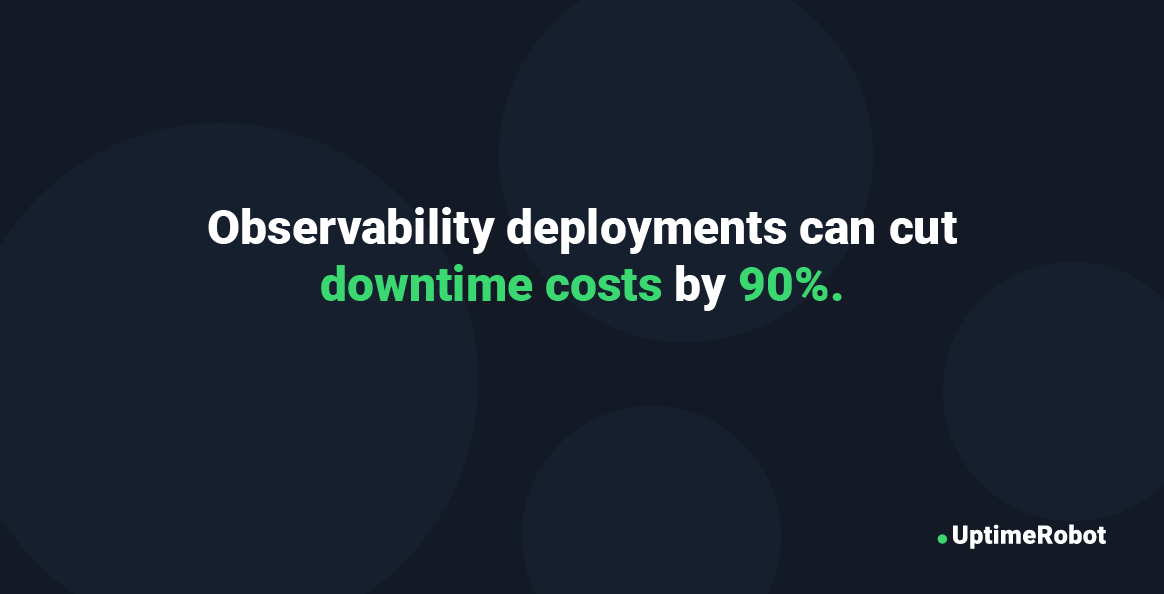
- Optimize your data collection: Collecting too much data can lead to increased storage costs and slower query times. By carefully selecting which data to collect and how often, organizations can reduce their data storage costs.
- Automate workflows: Manual workflows are time-consuming and can lead to errors. When companies automate tasks such as alerting and incident response, they can reduce the time and cost of resolving issues.
- Consider monitoring services: Traditional uptime monitoring tools like UptimeRobot can be a cost-effective solution for obtaining observability features such as response times, status codes, incident root causes and comment.
- Implement better storage solutions: Using efficient storage solutions, like time-series databases, can help reduce storage costs while maintaining high query performance.
Overall, by carefully selecting the right tools and optimizing workflows, organizations can significantly reduce their IT costs while still achieving effective observability.
Challenges of Observability
Data silos
Different teams and systems may use different tools and data sources, leading to data silos and difficulty in correlating data.
Volume, velocity, variety, and complexity
The sheer volume of data, the velocity at which it is generated, its variety, and the complexity of modern IT environments can make it challenging to collect and analyze observability data effectively.
Manual instrumentation and configuration
Manually configuring and instrumenting systems can be time-consuming and prone to errors, leading to incomplete or inaccurate observability data.
Lack of pre-production
Observability data gathered in pre-production environments may not reflect real-world production environments, leading to incomplete or inaccurate data.
Wasting time troubleshooting
Without effective observability tools, teams may spend significant time troubleshooting issues, leading to increased downtime and decreased productivity.
An effective monitoring tool that includes some of the observability features with notifications and status pages could save you some time.
Multiple information formats
Observability data may come in different formats and from different sources, making it challenging to correlate and analyze effectively.
Accidental invisibility
Certain events or data may be accidentally hidden or missed due to incomplete or incorrect instrumentation or configuration.
Lack of source data
Without access to the source code or systems generating the observability data, it may be challenging to identify the root cause of issues and troubleshoot effectively.
Use Cases in Observability
Knowing the ins and outs of observability is certainly helpful, but what does it look like in action? What are some common use cases in observability that display its abilities? Consider these three scenarios you may encounter.
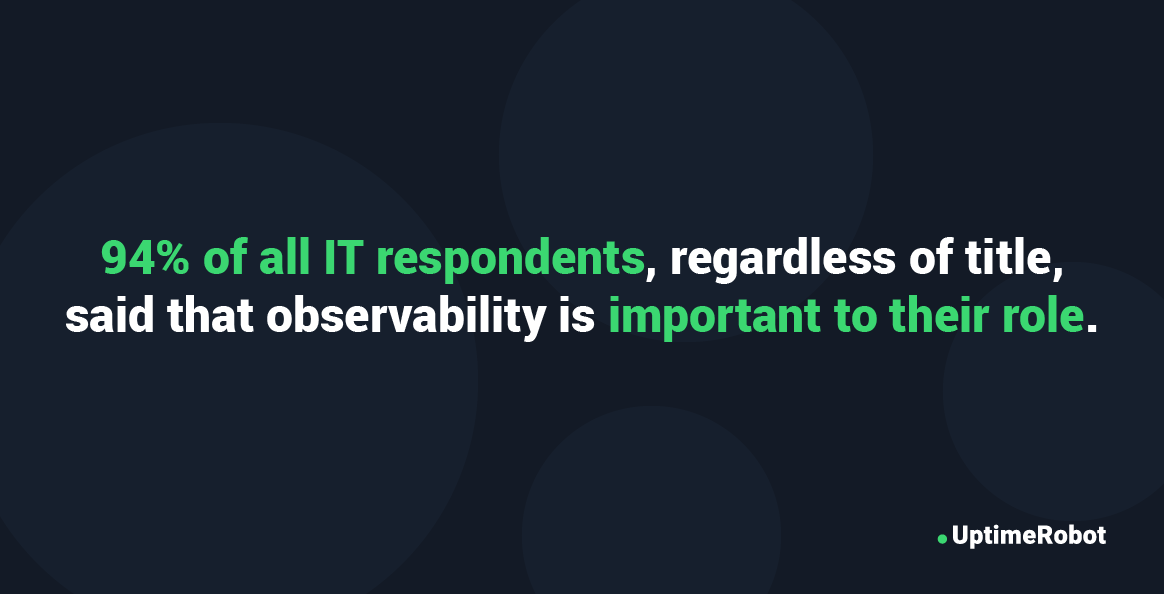
Resource optimization
Observability tools can help organizations optimize their use of resources, such as compute power and storage, by identifying areas of inefficiency or waste.
For example, monitoring metrics like CPU and memory usage can help teams identify which applications or services are consuming too many resources and take steps to optimize them.
Additionally, observability can help teams predict resource usage trends, and that can help them plan for future capacity needs and avoid costly downtime due to resource constraints.
Infrastructure design
When designing and building complex IT infrastructure, observability can help teams ensure that systems are performing as intended and identify any issues or bottlenecks.
By monitoring metrics like network traffic and server response times, teams can gain insights into how their infrastructure is performing and identify areas for improvement.
This information can be used to fine-tune infrastructure designs, and teams can be certain that systems can scale to meet demand, while remaining reliable and performant. Observability can also help teams identify areas where additional infrastructure investment may be needed to support business growth or new initiatives.
Capacity Planning
Observability can help teams plan the infrastructure capacity based on the performance and resource utilization of the system. This helps in ensuring that the infrastructure can handle the system’s current and predicted demand without causing performance issues or downtime.
Best Practices in Observability
- Let your business dictate your use cases: It’s essential to start by understanding what aspects of your business are most critical to monitor. This understanding should inform what data you collect and what metrics you track. For example, if you’re an e-commerce website, you may want to prioritize monitoring your website’s uptime, transaction processing time, and user engagement metrics.
- Define your metrics and objectives: Once you understand what data you need to collect, you should define the metrics that matter most to your business. Objectives should be specific, measurable, achievable, relevant, and time-bound (SMART). For example, you might aim to reduce the time it takes to resolve an incident by 50% within the next quarter.
- Monitor the right data: Collecting data is not enough; you must monitor the right data. Monitor the data that will help you achieve your business objectives. This means understanding which data points are leading indicators and which are lagging indicators. For example, monitoring CPU utilization can be a leading indicator of an impending performance issue.
- Automate as much as possible: Manual monitoring is error-prone, time-consuming, and doesn’t scale. Automation is key to achieving effective observability. Use automation to collect data, detect anomalies, and initiate remediation actions.
- Aggregated and centralized data: To achieve observability, data must be collected, stored, and analyzed. Aggregating data from different sources can provide a more comprehensive view of your system. Centralizing data storage simplifies querying and analysis.
- Use Integrations: Integrations with third-party tools can extend the functionality of your observability platform. For example, integrating with incident management tools can automate incident response. Integrating with collaboration tools can help teams stay informed and collaborate effectively.
Key Current Observability Trends
In Q1 of 2023, Middleware.io published a set of trends and predictions about the current state and the future of observability. While it is impossible to know what the future holds, these are some of the current trends that have come to light.
More integrated platforms
It is no secret that services of all kinds are being bundled together to provide users with a more seamless experience, and the same is true in observability. It is challenging to practice observability across multiple platforms, and observability tool providers are evolving to handle more aspects with one platform.
AI in observability
The newest trend in many markets is the use of AI Agents, and observability is no exception. As industries of all types race to integrate AI into their business strategies, teams integrating observability are doing the same.

Benefits of using AI in observability include gaining actionable insights, automating more processes, detecting anomalies that may have been overlooked before, and gaining real-time insights.
Observability Centers of Excellence
Observability Centers of Excellence (CoE) have emerged as a trend in recent years due to the increasing adoption of observability practices in organizations. CoEs can provide a platform for collaboration between teams, breaking down silos and encouraging knowledge sharing.
With the growing complexity of modern systems, the trend towards CoEs is expected to continue to gain traction.
How to Implement Observability: Tools & Policies
Implementing observability into your DevOps or software engineering processes can be a daunting task. Many companies use multiple observability tools, and it is also important to follow guidelines across your organization to keep consistency.
Choosing the Right Observability Tools
When choosing observability tools, there are several key features that you should consider, including the following.
- Support for the types of data sources you need to monitor (e.g., logs, metrics, traces)
- Scalability to handle large amounts of data
- Integration with your existing tools and infrastructure
- Visualization and reporting capabilities to help you quickly identify and troubleshoot issues
- Ease of use and setup
At UptimeRobot, we offer a reliable and user-friendly observability tool that provides real-time monitoring for your websites, servers, and APIs. Our tool includes features such as customizable alerts, integrations with popular messaging apps and services, and advanced reporting and analytics.
Ensuring Observability Across Your Organization
To ensure observability across your organization, it’s important to establish clear policies and procedures for monitoring and troubleshooting. These may vary depending on your team and your needs, but generally these practices are a good place to start.
- Set up standardized monitoring and alerting for all systems and applications
- Establish clear communication channels for reporting and resolving issues
- Provide training and resources for all team members on observability best practices
- Encourage collaboration and knowledge sharing between development and operations teams
Pitfalls to Avoid When Implementing Observability:
When implementing observability, there are several common pitfalls to avoid, including:
- Focusing too much on tooling and not enough on processes and culture
- Over-reliance on manual monitoring and troubleshooting
- Neglecting to define clear metrics and KPIs for monitoring and alerting
- Failing to integrate observability into the development lifecycle
To avoid these pitfalls, it’s important to take a holistic approach to observability that incorporates both tooling and process improvements.
Observability for Threat Detection and Security
Observability can play a critical role in threat detection and security by enabling organizations to identify and respond to security incidents more quickly and effectively.
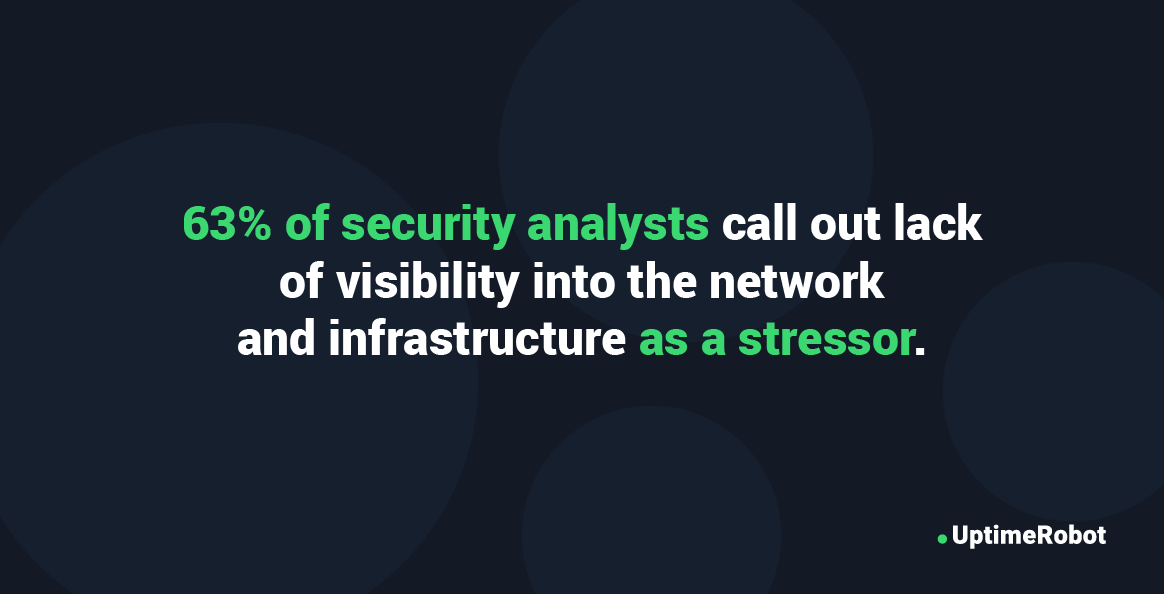
By using observability tools and techniques, security teams can gain real-time insights into the behavior of their systems and applications, allowing them to identify potential security issues before they become major problems.
Here are some of the ways observability can be used for threat detection and security:
- Monitoring network traffic and system logs to detect anomalies and potential security threats.
- Using machine learning and artificial intelligence to analyze large volumes of data and identify patterns that may indicate malicious activity.
- Implementing automated security incident response workflows to enable faster and more effective response to security incidents.
- Using real-time visualization tools to gain a better understanding of system and application behavior, and to identify potential security issues more quickly.
By monitoring critical services and applications for downtime or unusual behavior, security teams can quickly identify potential security incidents and take action to mitigate their impact.
In order to successfully implement observability for threat detection and security, organizations must ensure that their observability tools and techniques are integrated with their broader security infrastructure and processes.
This may require investment in new tools and technologies, as well as training and development for security teams to ensure they have the skills and knowledge necessary to effectively use observability for threat detection and response.
Top 3 Observability Tools
UptimeRobot
UptimeRobot is an observability tool that provides website and server monitoring services to organizations of all sizes. Here are some of its key features:
- Provides website and server monitoring services
- Does checks from multiple monitoring locations worldwide
- Sends alerts via email, SMS, push notifications, and 3rd party integrations
- Provides public status pages to keep your customers informed
- Offers an API for integrating with other tools and services
- Supports monitoring of HTTP, TCP/IP, ports, SSL certificates, and more
- Provides email reports, logs, and incident root causes for analyzing uptime and response time
Prometheus
Prometheus is an open-source monitoring solution that is popular for its time-series database, alerting capabilities, and support for multi-dimensional data.
- Data model with multi-dimensional time-series
- Powerful query language (PromQL)
- Alerting with flexible notification integrations
- Histograms, summaries, and counters for detailed analysis
- Easy to set up and configure
Grafana
Grafana is another open-source observability platform that allows users to visualize and analyze metrics, logs, and traces from multiple sources.
- Support for multiple data sources (Prometheus, Elasticsearch, InfluxDB, etc.)
- Rich set of visualization options, including graphs, tables, and alerts
- Ability to create custom dashboards and alerts
- Explore mode for ad hoc queries and analysis
- Support for plugins and extensions
How to use UptimeRobot for observability
UptimeRobot can be used for observability by monitoring the availability and performance of various systems and applications. It provides incident management features such as alerts, incident tracking, root causes, post-mortems, and reporting, which helps teams quickly identify and resolve issues.
Additionally, UptimeRobot allows for logging and commenting on incidents, providing context and facilitating collaboration among team members.
Final Thoughts
In summary, observability is a crucial concept for modern IT architecture management and development. It provides software engineers and DevOps teams with real-time insights into how their systems are performing and interacting with other systems and components. With this understanding, they can see issues as they arise and before they become critical.
By using the three pillars of observability – logs, metrics, and traces – teams gain a holistic view of the system, and can use this data to enhance efficiency and overall performance.
Though people often assume monitoring is the same as observability, the fact is that monitoring is part of observability.
Observability encompasses a much larger swath of information, and has more uses. Both practices are vital for keeping a system in functioning order.
Adopting observability as code can further increase efficiency, collaboration, and automation. It is becoming widely popular, and has proven to be beneficial in many ways.
Though there are challenges with observability, like with any other software engineering approach, following best practices and implementing the right tools can mitigate the potential pitfalls that come along with observability.
Overall, observability is a key process for reducing IT costs, improving performance, enhancing security, and more. As technology advances, the rewards we can reap from observability will only grow.
